The wild lands of Alaska national parks are changing at a rapid pace due to the disproportionate increases in temperature at high latitudes. Climate has fundamentally shaped the landscape of high-latitude parks, but now climate change is redefining them. This collection of articles provides a glimpse of the science related to climate change in the high-latitude parks of Alaska.
-
Article 1: High-Latitude National Parks on the Cusp of Change
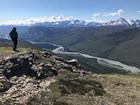
The wild lands of Alaska national parks are changing at a rapid pace due to the disproportionate increases in temperature at high latitudes. The uncertainty about cumulative climate changes and how they will impact specific regions is one of the greatest challenges facing park managers. Climate has fundamentally shaped the landscape of high-latitude parks, but now climate change is redefining them. Alaska Park Science, 22(1), 2023 Read more
-
Article 2: Crossing the Zero-Degree Threshold

Alaska, shaped by and dependent on ice and snow, is among the fastest-warming regions on Earth. As the mean annual air temperature warms above the freezing threshold of 0°C, the frozen water of its glaciers, permafrost, and snow will thaw and melt, altering the physical landscape and creating a cascade of effects. Alaska Park Science 22(1), 2023 Read more
-
Article 3: Stories Yet Told: Alaska’s Cultural Heritage in a Time of Unprecedented Climate Change

Within the modern boundaries of Alaska are some of the oldest-dated archeological sites in the Americas. An understanding of the depth and breadth of human history in Alaska informs our global understanding of human evolution, migration, occupation, adaptation, and cultural change around the planet. Climate change is threatening irreplaceable archeological sites, historical sites, and modern communities. Alaska Park Science 22(1), 2023 Read more
-
Article 4: Alaska’s Changing Vegetation Processes and Patterns: Plant Responses to Unprecedented Levels of Warming in the Far North
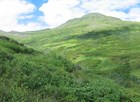
Climate is a fundamental driver of the character, structure, and distribution of plant communities in the Far North. Periodic and massive change is deeply woven into the fabric of Alaska’s ecosystems, which have been subject to repeated, dramatic shifts precipitated by disturbance and changing climatic conditions, among other drivers. We are just starting to see the earliest results of a huge experiment playing out on northern ecosystems. Alaska Park Science, 22(1), 2023 Read more
-
Article 5: What Happens When Northern Oceans Get Too Warm

Oceans have always been integral to the people inhabiting Alaska, driving culture and economics for thousands of years. Ecologically, productive northern oceans and seas provide abundant and commercially important fisheries and habitat for marine mammals, seabirds, shorebirds, and many other species. Recent marine heatwaves provide a window into what may happen to ocean life in a warming world. Alaska Park Science 22(1), 2023 Read more
-
Article 6: How Wildlife are Responding to a Warming Climate

Alaska spans vast range of latitude and elevations, encompassing a broad array of habitat types from temperate coastal rain forests to alpine and Arctic tundra. Therefore, the corresponding impacts of climate change, including implications to wildlife, also vary greatly. Research and long-term monitoring provide insights into how wildlife are responding. Alaska Park Science 22(1), 2023 Read more
-
Article 7: Responding to the Effects of Climate Change on Subsistence in Alaska
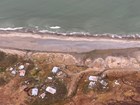
Climate change threatens dire consequences for many Alaska Native villages in remote areas, where subsistence hunting, fishing, and gathering are critical to livelihoods. Although Northern communities have a deep cultural history of adapting to change, they are highly vulnerable to current rapid changes and intensifying impacts. Alaska Park Science 22(1), 2023 Read more
-
Wrangell - St Elias National Park & Preserve
Article 8: Using Satellite Imagery to Detect the Changing Seasonality of River Ice
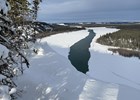
River ice navigability has changed, making conditions unreliable and unsafe for many traditional activities. Using satellite remote sensing, researchers have documented the historical changes in local river ice seasonality and characterized the patterns and drivers of open water hazards along rivers. Alaska Park Science 22(1), 2023 Read more
-
Wrangell - St Elias National Park & Preserve
Article 9: Traditional Knowledge of Changes in Winter Conditions in Alaska’s Copper River Basin

In Alaska’s Copper River Basin, less reliable snow and ice have presented challenges for traditional winter activities such as trapping, hunting, and gathering firewood. Some of these challenges have been persistent since the 1970s. Elders, culture-bearers, and expert trappers shared their extensive knowledge and experience of change on the Copper River through interviews. Alaska Park Science 22(1), 2023 Read more
-
Article 10: Communicating Science and Inspiring Hope

Climate change is a task society must address sooner rather than later. Park interpreters know it’s important to explain the science, the changes happening on the landscape, and the reasons why, but that’s only half their task. They aspire to inspire; to provoke their audiences to care. Societal action is the ultimate measure of success for effective communication. Alaska Park Science 22(1), 2023 Read more
-
Wrangell - St Elias National Park & Preserve
Article 11: Planning for Future Climates at Wrangell-St. Elias: Mainstreaming Park-Based Actions
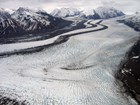
Deciding how to act in the face of climate change can be overwhelming. Yet any park can act to begin integrating climate change considerations into their operations. Read how Wrangell-St. Elias National Park and Preserve, the National Park Service Climate Change Response Program, and their partners advanced the park’s efforts to understand, adapt to, mitigate, and communicate with the public about climate change. Alaska Park Science 22(1), 2023 Read more
